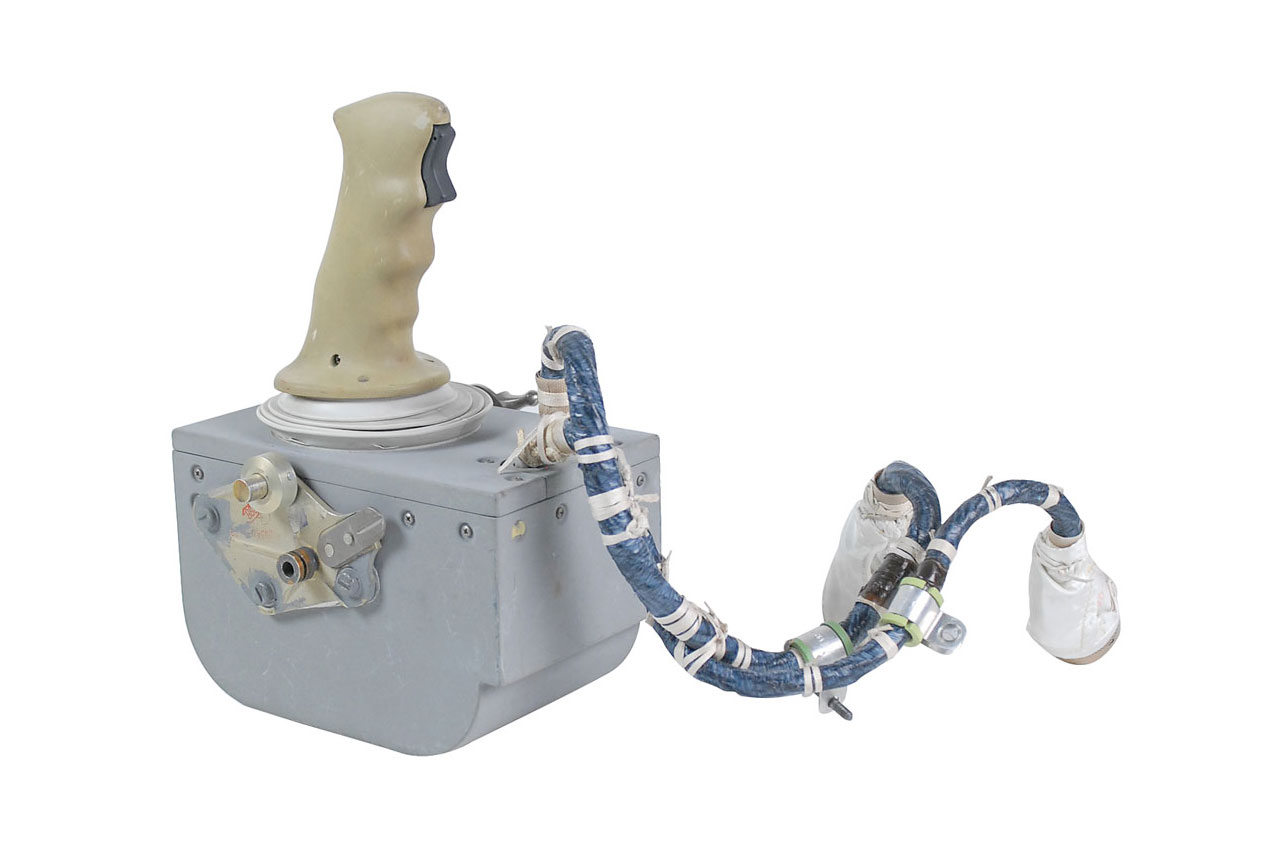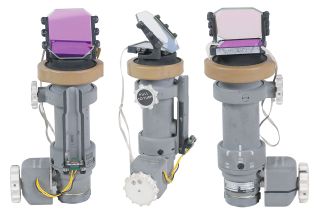Astronaut Joystick for Apollo 15 Moon Landing Tops $600,000 at Auction

The joystick controller used by astronaut David Scott to land Apollo 15's lunar module on the moon 43 years ago this July has sold for more than half a million dollars.
The sale is believed to be the highest price ever paid at a public auction for part of a NASA spacecraft.
RR Auction of Boston sold the spacecraft's rotational hand controller for $610,064 to an unidentified online bidder on Thursday evening (May 22). The record sale was a part of the firm's 7th Space and Aviation Autograph and Artifact Auction, which listed more than 600 aeronautic and space exploration relics and related memorabilia.
The Apollo 15 joystick controller and the crewman optical alignment sight (COAS) from the same spacecraft topped the sale's results. The COAS, which was used by Scott to make star sightings and to align the lunar module with the moon's horizon, sold for $126,180. [NASA's 17 Apollo Moon Missions in Pictures]
Both artifacts were removed from the lunar module Falcon at end of the lander's use, prior to its intentional crash into the lunar surface. Scott and his crewmates, Jim Irwin and Al Worden, returned to Earth aboard the command module Endeavour.
Scott, who as commander led the Apollo 15 mission and was the seventh out of just 12 men to walk on the moon, saved the controller and optical sight as mementos of the historic 1971 flight.
"In many cases, items such as these were abandoned by the crew after use, or lost forever to history as disposable equipment when sent tumbling back to the lunar surface in the spent lunar module to be vaporized upon impact with the surface," Bobby Livingston, executive vice president of RR Auction, said in a statement made prior to the sale.
Get the Space.com Newsletter
Breaking space news, the latest updates on rocket launches, skywatching events and more!
Both the controller and the COAS were accompanied by a two-page letter written by Scott attesting to the artifact's authenticity and explaining its use. Both items were in his possession since returning to Earth.
"Demand far outstrips supply for truly rare, and unique, lunar surface artifacts from the Apollo lunar landings, and these represent the pinnacle of Apollo-era flown material," said Richard Jurek, co-author of "Marketing the Moon: The Selling of the Apollo Lunar Program" (MIT Press, 2014).
A law passed in 2012 confirmed the Apollo-era astronauts' title to the spacecraft equipment that they returned to the Earth as mementos. The legislation cleared Scott and his fellow moon voyagers to keep, donate or sell the artifacts without legal challenge.
In addition to Scott's Apollo 15 artifacts, the auction also recorded five- and six-figure prices for artifacts from other missions.
A right-hand nylon "comfort" glove that Buzz Aldrin flew to Tranquility Base on the first ever moon landing, Apollo 11, in 1969 sold for $61,212. A checklist page Aldrin used on the lunar surface commanded $31,409.
The same high bid was fetched for a reproduction of the Declaration of Independence that also flew on Apollo 11, but which remained in orbit around the moon with Michael Collins, the mission's command module pilot.

A strap that held up the life support backpack that Charles "Pete" Conrad wore on Apollo 12 sold for $52,649. And a topographical map used by Eugene Cernan, the last man to walk on the moon, while driving the lunar rover sold for $38,005.
Even hardware that was built for Apollo but which never flew drew spirited bidding. An entry monitoring system that was likely used for training sold for $114,709.
Follow collectSPACE.com on Facebook and on Twitter at @collectSPACE. Copyright 2014 collectSPACE.com. All rights reserved.
Join our Space Forums to keep talking space on the latest missions, night sky and more! And if you have a news tip, correction or comment, let us know at: community@space.com.

Robert Pearlman is a space historian, journalist and the founder and editor of collectSPACE.com, an online publication and community devoted to space history with a particular focus on how and where space exploration intersects with pop culture. Pearlman is also a contributing writer for Space.com and co-author of "Space Stations: The Art, Science, and Reality of Working in Space” published by Smithsonian Books in 2018. He previously developed online content for the National Space Society and Apollo 11 moonwalker Buzz Aldrin, helped establish the space tourism company Space Adventures and currently serves on the History Committee of the American Astronautical Society, the advisory committee for The Mars Generation and leadership board of For All Moonkind. In 2009, he was inducted into the U.S. Space Camp Hall of Fame in Huntsville, Alabama. In 2021, he was honored by the American Astronautical Society with the Ordway Award for Sustained Excellence in Spaceflight History.
